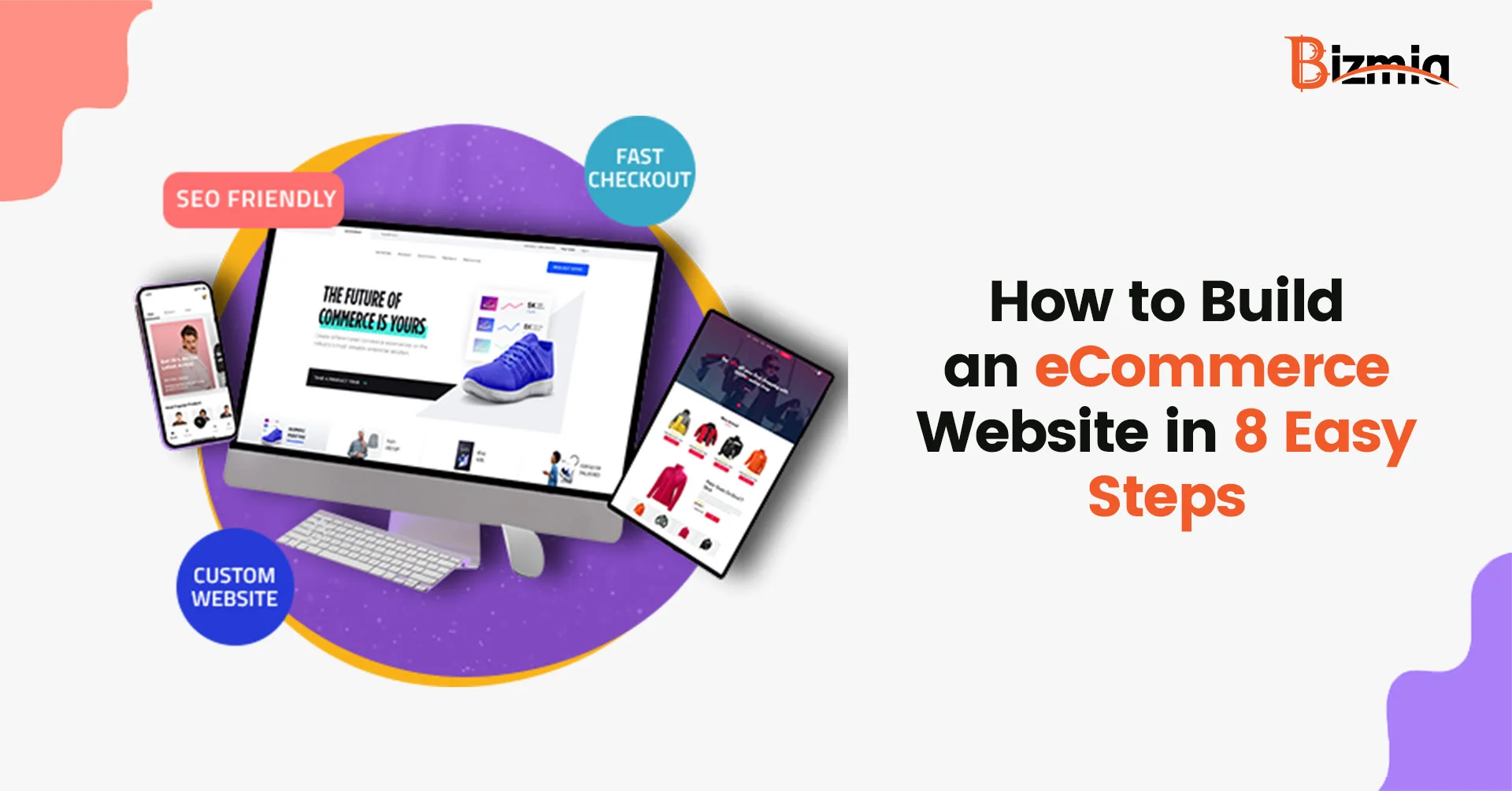Are you looking to join the e-commerce revolution and tap into the massive potential of online retail? If so, you’ve come to the right place. With e-commerce sales estimated to reach over $6.5 trillion by 2023, there’s never been a better time to get your feet wet in the world of online retail. Here, we’ll show you how to build an e-commerce website in 8 easy steps, so you can start selling your products to a worldwide audience and make the most of this lucrative industry. Whether you’re a first-time entrepreneur or an established merchant looking to expand your operations, our step-by-step guide will help you create an ecommerce website in no time. So let’s get started!
Step 1: Develop Your E-Commerce Strategy
The first step to building an e-commerce website is to develop a comprehensive strategy. Consider the following questions:
- What products or services will you be selling?
- Who is your target audience, and what’s the best way to reach them?
- What is the competitive landscape, and how can you differentiate your e-commerce site from others?
- What channels will you use for marketing your products/services?
- What payment options will you offer customers?
Having a clear strategy in place is essential for the success of your e-commerce website, so it’s important to take the time to answer these questions and develop a plan of action.
Step 2: Choose Your E-Commerce Platform
Now it’s time to choose a platform for your ecommerce website. There are many different platforms available, each with its own set of features and capabilities. Popular options include Shopify, BigCommerce, Magento, and WooCommerce. When deciding which platform to use, consider factors such as cost, functionality, scalability, and ease of use.
Step 3: Identify Your Hosting Needs
Once you’ve chosen a platform, you’ll need to identify your hosting needs. Depending on the size and scope of your e-commerce website, you may need to invest in a dedicated hosting solution. This is especially true if you are expecting large amounts of traffic or will be selling particularly large products.
Step 4: Register Your Domain Name
Your domain name is the address customers will use to access your website, so make sure to register it before moving forward. Choose a domain name that reflects your brand, is easy to remember, and accurately describes the products/services you will be selling.
Step 5: Design Your E-Commerce Website
Now it’s time to get creative! Designing your e-commerce website is the fun part, but it can also be a challenge. You’ll need to create a visually appealing design that is easy to navigate and offers a seamless shopping experience for your customers. Here are some things to keep in mind:
- Make sure the layout is easy to follow.
- Include clear product descriptions and high-quality images.
- Use clean lines and neutral colors.
- Utilize a search bar or product filter to make it easier for customers to find what they’re looking for.
- Include customer reviews/testimonials to build trust.
Step 6: Integrate Your Payment System
Once your e-commerce website is designed, you’ll need to integrate a payment system. Popular options include PayPal, Stripe, and Authorize.net. Consider the fees associated with each option and the payment methods they accept before deciding.
Step 7: Optimize for SEO
Search engine optimization (SEO) is essential for the success of any e-commerce website. SEO helps ensure that your site appears higher in search engine rankings and drives more organic traffic to your pages. Optimize your website by including relevant keywords in product descriptions, meta tags, and titles and utilizing social media marketing to boost your visibility further.
Step 8: Test and Launch Your Website
Once your e-commerce website is designed, tested, and ready to go live, it’s time to launch! Make sure to announce your new website to the public, reach out to customers, and create marketing campaigns. After launch, it’s also important to continually monitor your website and make any necessary changes or updates.
Final Words
Creating a successful e-commerce website can be a daunting task, but if you take the time to plan ahead and follow these steps, you’ll be well on your way to success. With a little bit of effort and dedication, you can create an ecommerce website that is both attractive and user-friendly – and drives more sales for your business. If you still need help, enlisting the services of an experienced ecommerce development agency that will help to ensure you get off to a good start. Good luck!












